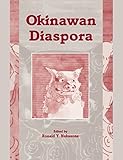Okinawan Diaspora / ed. by Ronald Y. Nakasone.
Material type: TextPublisher: Honolulu : University of Hawaii Press, [2002]Copyright date: ©2002Description: 1 online resource (220 p.)Content type:
TextPublisher: Honolulu : University of Hawaii Press, [2002]Copyright date: ©2002Description: 1 online resource (220 p.)Content type: - 9780824824068
- 9780824844141
- 304.8/0952/29 21
- DS832.5 .O55 2002
- online - DeGruyter
- Issued also in print.
| Item type | Current library | Call number | URL | Status | Notes | Barcode | |
|---|---|---|---|---|---|---|---|
 eBook
eBook
|
Biblioteca "Angelicum" Pont. Univ. S.Tommaso d'Aquino Nuvola online | online - DeGruyter (Browse shelf(Opens below)) | Online access | Not for loan (Accesso limitato) | Accesso per gli utenti autorizzati / Access for authorized users | (dgr)9780824844141 |
Browsing Biblioteca "Angelicum" Pont. Univ. S.Tommaso d'Aquino shelves, Shelving location: Nuvola online Close shelf browser (Hides shelf browser)

|

|

|

|

|

|

|
||
| online - DeGruyter The Magic Crocodile and Other Folktales from Indonesia / | online - DeGruyter On the Nā Pali Coast : A Guide for Hikers and Boaters / | online - DeGruyter New Guinea : Crossing Boundaries and History / | online - DeGruyter Okinawan Diaspora / | online - DeGruyter Pacific Places, Pacific Histories / | online - DeGruyter Conflict in Japan / | online - DeGruyter Plantation Workers : Resistance and Accommodation / |
Frontmatter -- Contents -- Note on Transliteration and Conventions -- Preface -- Part I. Introduction -- Chapter 1. "An Impossible Possibility" -- Chapter 2. Theorizing on the Okinawan Diaspora -- Chapter 3. Okinawa in the Matrix of Pacific Ocean Culture -- Part II Journeys -- Chapter 4. The "Japanese" of Micronesia: Okinawans in the Nan'yō Islands -- Chapter 5. "The Other Japanese": Okinawan Immigrants to the Philippines, 1903 -1941 -- Chapter 6. Japanese Latin American Internment from an Okinawan Perspective -- Chapter 7. Colonialism and Nationalism: The View from Okinawa -- Chapter 8. Eissa: Identities and Dances of Okinawan Diasporic Experiences -- Chapter 9. Hawai'i Uchinanchu and Okinawa: Uchinanchu Spirit and the Formation of a Transnational Identity -- Chapter 10. Agari-umaai: An Okinawan Pilgrimage -- Appendix -- Glossary -- References -- List of Contributors -- Index
restricted access online access with authorization star
http://purl.org/coar/access_right/c_16ec
The first Okinawan immigrants arrived in Honolulu in January 1900 to work as contract laborers on Hawai'i's sugar plantations. Over time Okinawans would continue migrating east to the continental U.S., Canada, Brazil, Peru, Argentina, Bolivia, Mexico, Cuba, Paraguay, New Caledonia, and the islands of Micronesia. The essays in this volume commemorate these diasporic experiences within the geopolitical context of East Asia. Using primary sources and oral history, individual contributors examine how Okinawan identity was constructed in the various countries to which Okinawans migrated, and how their experiences were shaped by the Japanese nation-building project and by globalization. Essays explore the return to Okinawan sovereignty, or what Nobel Laureate Oe Kenzaburo called an "impossible possibility," and the role of the Okinawan labor diaspora in Japan's imperial expansion into the Philippines and Micronesia. Contributors: Arakaki Makoto, Robert K. Arakaki, Hokama Shuzen, Edith M. Kaneshiro, Ronald Y. Nakasone, Nomura Koya, Shirota Chika, Tomiyama Ichiro, Wesley Ueunten.
Issued also in print.
Mode of access: Internet via World Wide Web.
In English.
Description based on online resource; title from PDF title page (publisher's Web site, viewed 02. Mrz 2022)


